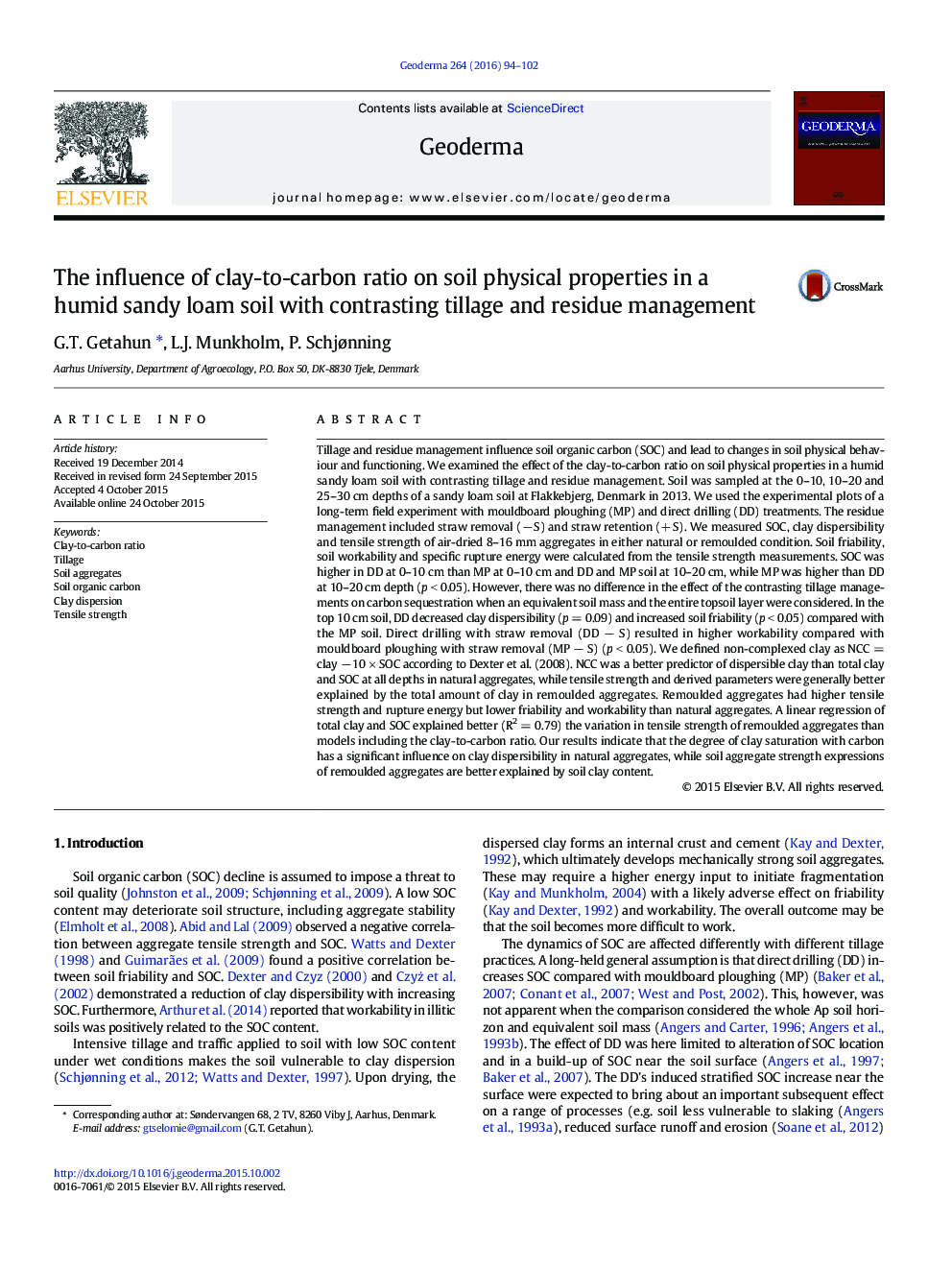| کد مقاله | کد نشریه | سال انتشار | مقاله انگلیسی | نسخه تمام متن |
|---|---|---|---|---|
| 4573086 | 1332418 | 2016 | 9 صفحه PDF | دانلود رایگان |
• We examined the effect of the clay-to-carbon ratio on soil physical properties.
• Tillage had no effect on carbon accumulation on an equivalent soil mass basis.
• In natural aggregates, clay dispersibility correlated well to non-complexed clay.
• In remoulded aggregates, strength expressions correlated well to total clay.
• Remoulded aggregates produced higher strength, lower friability and workability.
Tillage and residue management influence soil organic carbon (SOC) and lead to changes in soil physical behaviour and functioning. We examined the effect of the clay-to-carbon ratio on soil physical properties in a humid sandy loam soil with contrasting tillage and residue management. Soil was sampled at the 0–10, 10–20 and 25–30 cm depths of a sandy loam soil at Flakkebjerg, Denmark in 2013. We used the experimental plots of a long-term field experiment with mouldboard ploughing (MP) and direct drilling (DD) treatments. The residue management included straw removal (− S) and straw retention (+ S). We measured SOC, clay dispersibility and tensile strength of air-dried 8–16 mm aggregates in either natural or remoulded condition. Soil friability, soil workability and specific rupture energy were calculated from the tensile strength measurements. SOC was higher in DD at 0–10 cm than MP at 0–10 cm and DD and MP soil at 10–20 cm, while MP was higher than DD at 10–20 cm depth (p < 0.05). However, there was no difference in the effect of the contrasting tillage managements on carbon sequestration when an equivalent soil mass and the entire topsoil layer were considered. In the top 10 cm soil, DD decreased clay dispersibility (p = 0.09) and increased soil friability (p < 0.05) compared with the MP soil. Direct drilling with straw removal (DD − S) resulted in higher workability compared with mouldboard ploughing with straw removal (MP − S) (p < 0.05). We defined non-complexed clay as NCC = clay − 10 × SOC according to Dexter et al. (2008). NCC was a better predictor of dispersible clay than total clay and SOC at all depths in natural aggregates, while tensile strength and derived parameters were generally better explained by the total amount of clay in remoulded aggregates. Remoulded aggregates had higher tensile strength and rupture energy but lower friability and workability than natural aggregates. A linear regression of total clay and SOC explained better (R2 = 0.79) the variation in tensile strength of remoulded aggregates than models including the clay-to-carbon ratio. Our results indicate that the degree of clay saturation with carbon has a significant influence on clay dispersibility in natural aggregates, while soil aggregate strength expressions of remoulded aggregates are better explained by soil clay content.
Journal: Geoderma - Volume 264, Part A, 15 February 2016, Pages 94–102
